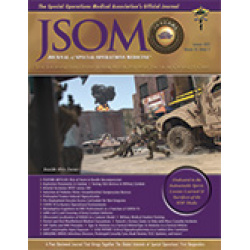Admission Forced Vital Capacity Adds a Predictive Physiologic Tool to Triage Patients Suffering Rib Fractures: A Prospective Observation Trial
Johnston LR, Nam JJ, Nissen AP, Sleeter JJ, Aden JK, Mills AF, Sams VG 99(5). 0 (Journal Article)
Background: Patients with rib fractures are at high risk for morbidity and mortality. This study prospectively examines bedside percent predicted forced vital capacity (% pFVC) in predicting complications for patients suffering multiple rib fractures. The authors hypothesize that increased % pFVC is associated with reduced pulmonary complications. Methods: Adult patients with ≥3 rib fractures admitted to a level I trauma center, without cervical spinal cord injury or severe traumatic brain injury, were consecutively enrolled. FVC was measured at admission and % pFVC values were calculated for each patient. Patient were grouped by % pFVC <30% (low), 30-49% (moderate), and ≥50% (high). Results: A total of 79 patients were enrolled. Percent pFVC groups were similar except for pneumothorax being most frequent in the low group (47.8% vs. 13.9% and 20.0%, p = .028). Pulmonary complications were infrequent and did not differ between groups (8.7% vs. 5.6% vs. 0%, p = .198). Discussion: Increased % pFVC was associated with reduced hospital and intensive care unit (ICU) length of stay (LOS) and increased time to discharge to home. Percent pFVC should be used in addition to other factors to risk stratify patients with multiple rib fractures. Bedside spirometry is a simple tool that can help guide management in resource-limited settings, especially in large-scale combat operations. Conclusion: This study prospectively demonstrates that % pFVC at admission represents an objective physiologic assessment that can be used to identify patients likely to require an increased level of hospital care.


 Español
Español 



